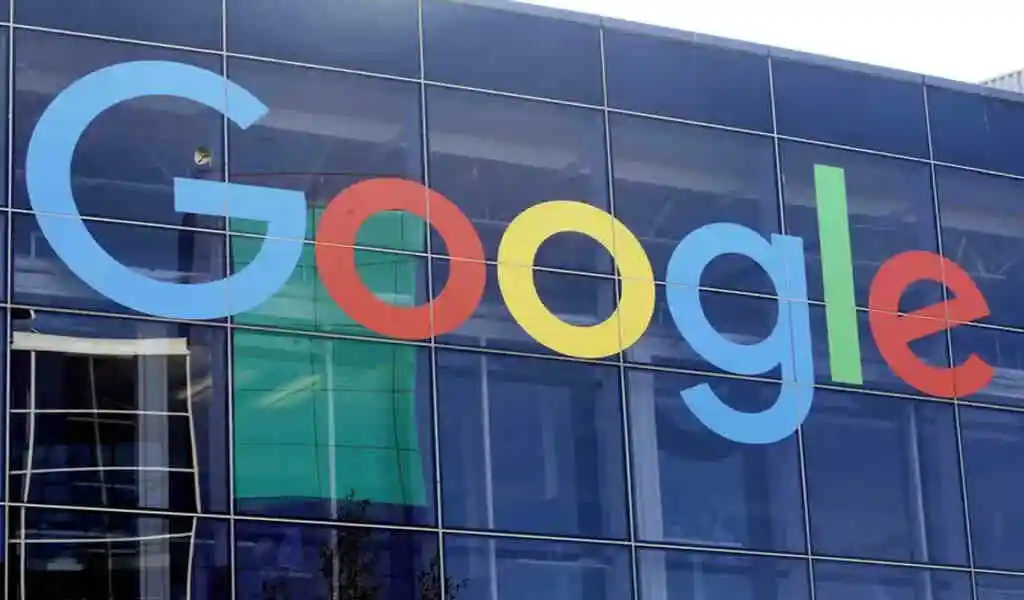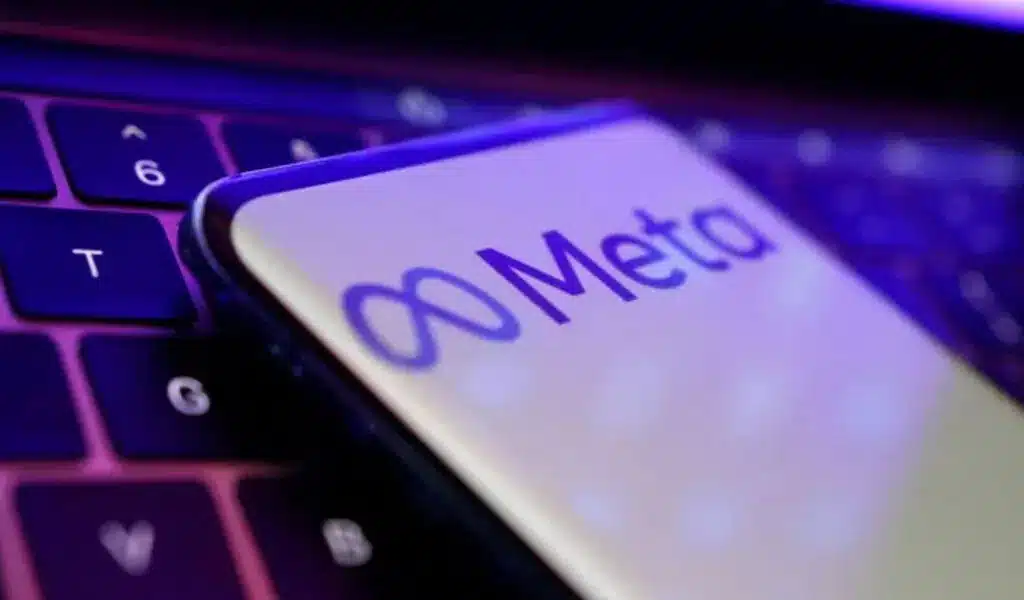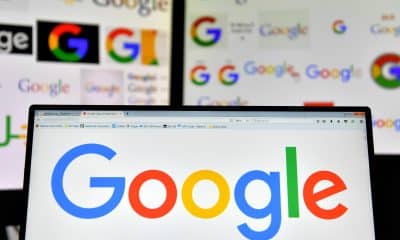Business
Google’s Millisecond Ad Auctions Are The Focus Of A Monopoly Claim

Alexandria, Virginia – It happens in milliseconds, preferably as you browse the internet. Computer and software networks analyze who you are, and what you are looking at, and buy and sell website adverts.
Google is most likely responsible for determining which ads you see and how much an advertiser pays to be on your screen.
AP News Image
Google’s Millisecond Ad Auctions Are The Focus Of A Monopoly Claim
In reality, the Justice Department and a coalition of states argue that Google’s domination over the technology that governs the sale of billions of Internet display ads every day represents an illegal monopoly that should be split up.
A trial is underway in federal court in Alexandria, Virginia, to establish if Google’s ad tech stack represents an illegal monopoly. The first week has included a thorough examination of how Google’s products interact to perform behind-the-scenes computerized auctions that place advertising in front of people in the blink of an eye.
Online advertising has grown rapidly. If you saw an online display ad fifteen years ago, there was a high chance it depicted individuals dancing over their excitement for cheap mortgage rates, and those commercials were pushed on you whether you were browsing real estate or checking for baseball statistics.
AP News Image
Google, for its part, claims to have invested billions of dollars in improving the quality of ads seen by consumers and ensuring that marketers can reach the consumers they seek.
According to the Justice Department, Google has also rigged automated ad sales auctions to favor itself over other would-be industry players, denying the publishing industry hundreds of millions of dollars that it would have received if the auctions were truly competitive.
During the Virginia trial, government witnesses detailed the auction process and how it has developed over time.
In the government’s picture, three distinct instruments work together to sell an ad and present it in front of a consumer. There are ad servers that publishers use to sell space on their websites, particularly the rectangular advertising that displays at the top and right sides of a page. Ad networks are used by advertisers to purchase ad space on a variety of related websites.
Publishers naturally want to earn the highest possible price for their ad space, but testimony at trial revealed that this did not always occur due to Google’s policies.
For years, Google provided its ad exchange, AdX, the first opportunity to match a publisher’s requested floor price. For example, if a publisher wished to sell an ad impression for at least 50 cents, Google’s engine would prioritize its own ad exchange. If Google’s ad exchange bid 50 cents, it would win the auction, even if competing ad exchanges offered higher bids later on.
AP news Image
Google’s Millisecond Ad Auctions Are The Focus Of A Monopoly Claim
Google claimed the approach was required to ensure advertising loaded promptly. It would be too time-consuming for the computers to accept bids from every ad exchange.
Publishers were displeased with the system and devised a workaround to conduct auctions outside of Google’s purview, a procedure known as “header bidding.” Internal Google documents presented at the trial depicted header bidding as a “existential threat” to Google’s market domination.
Google’s reaction was based on its control over all three components of the process. If publishers held an auction outside of Google’s purview but still used Google’s publisher ad server, DoubleClick For Publishers, the program would force the winning bid back into Google’s Ad Exchange. If Google was willing to match the price earned by publishers in the header-bidding auction, it would win the auction.
According to Professor Ramamoorthi Ravi, an expert at Carnegie Mellon University, Google’s regulations failed to maximise value for publishers and “seem to have been designed to advantage Google’s own products.”
Publishers could cease utilising Google’s ad exchange totally, but they were hesitant to do so at trial because it would mean losing access to Google’s massive, exclusive cache of advertisers in its Google Ads network, which was only accessible through Google’s ad exchange.
Google, for its side, claims that it has not conducted auctions in this manner since 2019, and that its proportion of the display ad market has dwindled over the last five years. It claims that integrating its buy side, sell side, and middleman solutions allows them to work more smoothly and rapidly, while also reducing the danger of misleading ads or malware.
Google also claims that its developments over the previous 15 years have helped to better the matching of internet adverts to consumer interests. Google claims it was at the vanguard of introducing “real-time bidding,” which allowed an advertiser selling shoes, for example, to be matched with a consumer whose web profile indicated an interest in purchasing shoes.
According to Google, these developments enabled publishers to charge a premium for their available ad space because the advertiser knew the ad would be seen by someone interested in their product or service.
According to the Justice Department, even though Google no longer conducts auctions in the manner described, it assisted Google in maintaining its monopoly in the ad tech market in the years preceding 2019, and that its current monopoly allows Google to keep up to 36 cents on the dollar of every ad purchase it brokers when the transaction runs through all of its various products.
The Virginia trial comes barely a month after a court in Washington ruled that Google’s search engine is also an unconstitutional monopoly. There has been no ruling in that case as to what remedies, if any, the judge will impose.
SOURCE | AP
Business
Iconic Tupperware Brands Seeks Chapter 11 Bankruptcy

NEW YORK — Tupperware Brands, which revolutionized food storage decades ago, has filed for Chapter 11 bankruptcy protection.
Tupperware, based in Orlando, Florida, intends to continue operations during the bankruptcy proceedings and will seek court clearance for a sale “in order to protect its iconic brand,” the firm announced shortly before midnight on Tuesday.
The corporation is seeking bankruptcy protection as it attempts to revitalize its operations. Tupperware sales increased slightly during the early stages of the COVID-19 epidemic, but overall sales have been steadily declining since 2018 owing to increased competition. Financial difficulties have continued to mount for the corporation.
Iconic Tupperware Brands Seeks Chapter 11 Bankruptcy
Doubts about Tupperware’s future have persisted for some time. Last year, the company sought extra financing as it warned investors about its capacity to continue operations and the prospect of being delisted from the New York Stock Exchange.
The NYSE issued the company an extra non-compliance warning for failing to publish its annual results with the Securities and Exchange Commission earlier this year. In recent months, Tupperware has continued to raise concerns about its capacity to stay solvent, with an August securities filing citing “significant liquidity challenges.”
Tupperware filed for bankruptcy on Tuesday, reporting more than $1.2 billion in total obligations and $679.5 million in total assets. The company’s shares have plunged 75% this year and finished Tuesday at around 50 cents each.
“The reality is that the decline at Tupperware is not new,” Neil Saunders, managing director of GlobalData, wrote in a commentary on Wednesday. “It is very difficult to see how the brand can get back to its glory days.”
Saunders explained that many consumers have been switching to cheaper home storage brands, and that competition has increased over time, particularly with the advent of online platforms like Temu and retailers like Target beefing up their own home storage and kitchenware brands.
Tupperware’s origins go back to 1946. According to the company’s website, shortly after the Great Depression, chemist Earl Tupper found inspiration while making moulds at a plastics factory, embarking on a mission to create an airtight seal for a plastic container, similar to that on a paint can, to assist families in saving money on food waste.
The brand enjoyed tremendous expansion in the mid-twentieth century, particularly with the introduction of Tupperware parties, which began in 1948. Tupperware parties, in particular, provided many women with the opportunity to run their own businesses from the comfort of their own homes, selling their products to social circles.
The approach worked so successfully that Tupperware finally pulled its products from retailers. In Tuesday’s bankruptcy statement, the firm stated that there are no immediate modifications to Tupperware’s independent sales consultant agreements.
According to court records filed Tuesday, Tupperware now employs over 5,450 people in 41 countries and works with a global sales force of over 465,000 consultants who sell products on a freelance basis in approximately 70 nations.
Tuesday’s announcement also mentioned plans to “further advance Tupperware’s transformation into a digital-first, technology-led company,” potentially indicating a shift towards increased reliance on the brand’s website or more online-focused marketing, though the company did not provide specifics.
In a statement, Tupperware President and CEO Laurie Ann Goldman recognised the company’s recent financial problems and stated that the bankruptcy process is intended to provide “essential flexibility” while it pursues this transformation. She also stated that the brand was not going anywhere.
Iconic Tupperware Brands Seeks Chapter 11 Bankruptcy
“Whether you are a dedicated member of our Tupperware team, sell, cook with, or simply love our Tupperware products, you are a part of our Tupperware family,” Goldman stated in an email. “We plan to continue serving our valued customers with the high-quality products they love and trust throughout this process.”
Goldman, who previously served as CEO of Spanx, was appointed CEO of Tupperware in October 2023, as part of a bigger leadership transition. Over the last year, the corporation has established a new management team.
SOURCE | AP
Business
Facebook Owner Meta Bans Russia State Media Outlets Over ‘Foreign Interference’

LONDON — Meta said it is blocking Russia’s state media organizations from its social media platforms, claiming that the outlets employed misleading strategies to spread Moscow’s misinformation. The Kremlin condemned the news on Tuesday.
The business, which owns Facebook, WhatsApp, and Instagram, announced late Monday that it will implement the restriction over the following few days as part of its attempts to counter Russia’s covert influence operations.
“After careful consideration, we expanded our ongoing enforcement against Russian state media outlets: Rossiya Segodnya, RT and other related entities are now banned from our apps globally for foreign interference activity,” Meta stated in a written statement.
Facebook Owner Meta Bans Russia State Media Outlets Over ‘Foreign Interference’
Dmitry Peskov, Kremlin spokesman, reacted, stating that “such selective actions against Russian media are unacceptable,” and that “Meta with these actions are discrediting themselves.”
“We have a really negative view about this. And this, of course, hinders our chances of normalising relations with Meta,” Peskov told reporters during his regular conference call.
RT, formerly known as Russia Today, and Russia Segodnya both condemned the move.
“It’s cute how there’s a competition in the West — who can try to spank RT the hardest, in order to make themselves look better,” said RT in a statement.
Rossiya Segodnya, the parent corporation of state news agency RIA Novosti and news brands such as Sputnik, stated that Meta’s decision “was not unexpected for us.”
“Meta is a highly politicised organisation. We will continue to work in the countries where we are now present, and this decision will have no impact on our activity,” Rossiya Segodnya stated in a statement.
Meta’s moves came just days after the US announced new sanctions against RT, citing the Kremlin news outlet as being a significant component of Russia’s war machine and efforts to destabilize its democratic enemies.
Last week, US officials said that RT was collaborating with the Russian military and organizing fundraising drives to buy sniper rifles, body armor, and other equipment for soldiers fighting in Ukraine. They further said that RT websites pretended to be credible news sites but were used to promote disinformation and propaganda throughout Europe, Africa, South America, and elsewhere.
Earlier this month, the Biden administration seized Kremlin-run websites and charged two RT workers with sending millions of dollars in covert funding to a Tennessee-based content development company to generate English-language social media videos promoting Kremlin policies.
Moscow has denied the allegations.
Facebook Owner Meta Bans Russia State Media Outlets Over ‘Foreign Interference’
Meta had already taken steps to curb Moscow’s online presence. Since 2020, it has labeled postings and content from state-run media. Two years later, it prohibited Russian state media from running ads and lowering their content in people’s feeds, and the company, along with other social media sites such as YouTube and TikTok, barred European Union users from accessing RT and Sputnik channels after they were sanctioned by Brussels. In 2022, Meta also shut down a vast Russia-based disinformation network that propagated Kremlin talking points about the invasion of Ukraine.
Moscow responded by branding Meta as an extremist group in March 2022, shortly after sending soldiers into Ukraine and restricting Facebook and Instagram. Both sites, as well as Elon Musk’s X, formerly known as Twitter, which is also restricted, were popular among Russians before to the invasion and the accompanying crackdown on independent media and other kinds of critical discourse. The social media services are now only available over virtual private networks.
SOURCE | AP
Business
Instagram Makes Teen Accounts Private As Pressure Mounts On The App To Protect Children

Instagram is making teen accounts private by default in an effort to make the platform safer for minors, amid mounting criticism of how social media affects young people’s lives.
Beginning Tuesday, anybody under the age of 18 who signs up for Instagram in the United States, United Kingdom, Canada, and Australia will be assigned to restricting teen accounts, and those with existing accounts will be transferred over the next 60 days. Teenagers in the European Union will have their accounts updated later this year.
Meta agrees that teens may lie about their age and says they will be required to verify their ages in additional situations, such as when they attempt to register a new account with an adult birthday. The Menlo Park, California company also stated that it is developing technology to detect teen accounts that appear to be adults and immediately place them in limited teen accounts.
Instagram Makes Teen Accounts Private As Pressure Mounts On The App To Protect Children
Teen accounts will be private by default. Private messages are controlled, so teenagers can only receive them from persons they follow or are already linked with. “Sensitive content,” such as footage of individuals fighting or advertisements for cosmetic procedures, will be limited, Meta stated. Teens will also receive notifications if they spend more than 60 minutes on Instagram, and a “sleep mode” will be enabled, which disables notifications and sends auto-replies to direct messages between 10 p.m. and 7 a.m.
These settings will be enabled for all teens, but 16 and 17-year-olds will be able to disable them. Children under the age of 16 must obtain permission from their parents.
“The three concerns we’re hearing from parents are that their teens are seeing content that they don’t want to see or that they’re getting contacted by people they don’t want to be contacted by or that they’re spending too much on the app,” according to Naomi Gleit, head of product at Meta. “So teen accounts is really focused on addressing those three concerns.”
The announcement comes as the firm faces lawsuits from dozens of US states accusing it of endangering young people and contributing to the juvenile mental health crisis by knowingly and deliberately developing features on Instagram and Facebook that addict children to its platforms.
Letitia James, New York Attorney General, called Meta’s statement “an important first step, but much more needs to be done to ensure our kids are protected from the harms of social media.” James’ office is collaborating with other New York officials on how to enforce a new state law aimed at limiting children’s access to what critics call addictive social media feeds.
Meta’s previous efforts to address teen safety and mental health on its platforms have been received with criticism that the adjustments are insufficient. For example, children will receive a notification when they have spent 60 minutes on the app, but they will be free to ignore it and continue scrolling.
That is, unless the child’s parents use “parental supervision” mode, which allows parents to limit kids’ Instagram usage to a set length of time, such as 15 minutes.
Meta’s most recent changes provide parents with more options for managing their children’s accounts. To modify their settings to less restrictive ones, those under the age of 16 will require permission from their parent or guardian. They can accomplish this by enabling “parental supervision” on their accounts and linking them with a parent or guardian.
Meta’s president of worldwide affairs, Nick Clegg, stated this week that parents do not use the parental controls that the business has implemented in recent years.
“Parents will be able to see, via the family centre, who is messaging their teen and hopefully have a conversation with their teen,” she told me. “If there is bullying or harassment happening, parents will have visibility into who their teen’s following, who’s following their teen, who their teen has messaged in the past seven days and hopefully have some of these conversations and help them navigate these really difficult situations online.”
Instagram Makes Teen Accounts Private As Pressure Mounts On The App To Protect Children
Last year, U.S. Surgeon General Vivek Murthy stated that digital corporations place too much responsibility on parents to keep their children safe on social networking platforms.
“We’re asking parents to manage a technology that’s rapidly evolving that fundamentally changes how their kids think about themselves, how they build friendships, how they experience the world — and technology, by the way, that prior generations never had to manage,” Murthy told CNN in May 2023.
SOURCE | AP
-
Election News4 weeks ago
Kamala Harris’ Presidential Campaign Raises $500 Million in 4 Weeks
-
News4 weeks ago
India’s LGBT Blood Donation Ban Remains Despite 2018 Ruling on Gay Sex
-
Entertainment4 weeks ago
Megalopolis Trailer Pulled By Lionsgate Over Fabricated Critics Quotes
-
Tech4 weeks ago
Apple iPhone 16 Rumors: Release Date, Specs, Price, and Design Leaks
-
Tech4 weeks ago
Neuralink Successfully Implants Second Brain Chip in Human Patient Alex
-
Tech4 weeks ago
Google Introduces Advanced AI Theft Protection for Android Phones












































